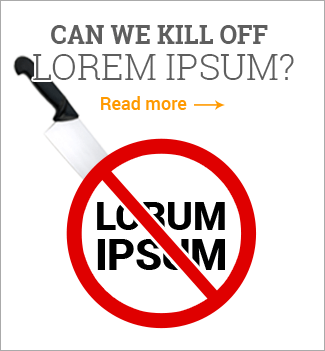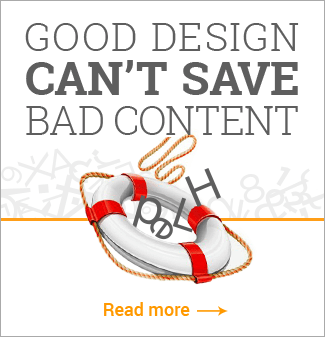
Copywriters often believe business to business copy should appeal to the intellect, not emotions. But, whether you’re writing web content for consumers or executives, remember you’re writing for people. And everyone has feelings.
In fact, business to business audiences are as emotional as business to consumers. Fear, greed and other motivators do play a role in their decision-masking process. You just need to make sure your business to business web content speaks to the right emotions.
1. Personal benefits
Again, business buyers are people, so drive home the personal benefits. Explain how your product or service will make them look gook in front of their superiors, advance their career or shave some hours off their workweek.
2. Business benefits
Business buyers are acting on behalf of the company, so clearly convey how their business will reduce or eliminate costs, increase sales, or help the company expand into new markets.
Copywriters need to remember, whether writing business to business or business to consumer web copy, you need to engage online visitors emotionally, and treat them with respect.
For business and pleasure, people are placing bios on multiple sites, from Facebook to Twitter to LinkedIn. That’s because Internet users have an increasing number of accounts where we make friends, build networks or market businesses.
So it makes sense to invest some effort or resources in a bio, and even have a couple of different versions serving different sites and purposes. After all, you’re branding yourself on the Web, and the right bios can make a world of difference to how people perceive you.
Presenting consistent information in your bio(s) makes you appear more professional and memorable. However, personal brands are often disjointed on the Web because most people have different identities on each social network.
The good news is there are emerging technologies that will enable a transportable identity, which will empower Internet users to bring your identities with you. It’ll lead to an integrated social experience.
Meanwhile, whether you have one bio or 10 floating around the Web, it’s wise to ensure your profiles are up to date, consistent, and put your best side forward.

To ensure the world doesn’t miss out on awe-inspiring or useful words, writers should always jot down ideas as they surface.
Inspired by lyrics? Someone said something captivating? Capture it! I recall an interview with Radiohead, where the band explained how a mutual friend said: “The best you can is good enough.” They were moved by the phrase, and eventually worked it into their lyrics for the tune Optimistic.
Sure, there are the BlackBerry, iPhone and generic microrecorder routes, but old school notebooks can be practical and fulfilling. In the cold digital age, tradition can be enchanting. In fact, you should check out MOLESKINE, which offers simple, legendary notebooks that have retained the thoughts of creative heavyweights like Van Gogh, Picasso and Hemingway.
Too much noise in your life? Pick a time of day when you can write without disruptions, and make it a habit. When you’re enjoying your morning latte? Late in bed? Whatever works for you. Find your time and try sticking with it.
Can’t seem to get inspired? Just dive in! Grab a blank sheet or screen and just start writing. If ideas or leads don’t emerge, try something different, like playing around with contradictory headlines. Try seeing things in a different perception.
Don’t let a brilliant thought get lost. Document your ideas.

It’s the Web, right? So it’s supposed to be sticky. Fortunately, there are simple ways to ensure visitors “stick around” your website.
Even avoiding pricey add-ons such as corporate videos, your web copy alone — if done right — can make your website more attractive to users. Here’s how:
1. Inject Some Personality, but Watch the Humour
Speak directly to your visitors in a personal, authentic voice. Most web users don’t want to be entertained; instead, they’re looking for specific information. Your web copy should direct them with a few choice, friendly words.
Continue reading →
As online visitors often jump from one link to another, you should treat your links like headlines. They should deliver your primary message in as few words as possible.
In fact, a recent study by Jakob Nielsen suggests the first couple of words in your links are imperative.
Nielsen reports: “Online reading is often dominated by the F-pattern. That is, people read the first few listed items somewhat thoroughly — thus the cross-bars of the ‘F’ — but read less and less as they continue down the list, eventually passing their eyes down the text’s left side in a fairly straight line. At this point, users see only the very beginning of the items in a list.”
Continue reading →
Posted on Apr 12 2009 10:32 pm by Web Copywriters
tags: Web Content Studies Writing for the Web
|
category: Writing for the Web |
Leave a comment
Your website’s headlines and kickers (a.k.a. sub headlines) need to tell visitors they’re in the right place.
You have a fraction of a second to orient people on the Web. If your web content does a good job, you’re often a step closer to a conversion. Miss the mark and your bounce rates will go through the roof.
A headline takes more than a catchy hook or angle to get prospects to stop and scan your web content. You need to align your headlines and web content with your visitors’ emotional drivers or trigger points.
The most effective way to achieve this is to leverage what you know about your target audience. Familiarity can help you nail the right information, keywords and angle.
But always be sure to provide practical information on where they’re at and what you can do for them. Vague statements don’t stick well on the Web. “5 Writing Tips for Web Designers” is a lot more helpful to visitors than a generic headline, such as “Writing and Web Design.”
Precise, practical headlines help your visitors get to the right information, and spare them time and frustration.
Posted on Mar 17 2009 11:51 pm by Web Copywriters
tags: Website Conversions Writing for the Web
|
category: Writing for the Web |
2 Comments
When you’re creating or revamping your web content, be sure to periodically ask yourself: “Does my audience care?”
If the answer is no, you’re headed down a slippery slope. That’s because web content should speak to and cater to the visitor – not the business owner, designer, developer, programmer, or your spouse. Indeed, the consumer is the true king of the Web.
To help achieve useful web content, you need to define not only what content will be published, but why you’re publishing it in the first place.
Self-centric jargon just gets in the way. Visitors want to know how you can help them. So tell them.
Don’t waste their time with we-driven copy. Respect your online guests.
Your brand on the Web goes far beyond logos and colours. The digital experience your website provides visitors heavily shapes perception.
In fact, your brand is what your visitors talk about to friends, family and peers after they use your website, products or services. And it can be negative or positive.
The scary thing for businesses on and off the Web is that people tend to talk a lot more about negative experiences than the positive.
Consider all the times you’ve dined at restaurants. How many times have you or others around you complained to a manager? And now think about how many times you or the people at your table asked to speak to the manager to give praise?
Your online brand is created with every single click, image and word. So be sure to treat your visitors with respect.
At the end of the day, their perception is reality.
Consumers suffer from information overload. Billboards, TV commercials, radio spots and direct mail were bad enough. Now we have to deal with the saturated Web.
Don’t waste your prospects’ time with loads of web content that’s not useful. Only provide your visitors content that’s to the point and relevant to their needs.
Is your web content concise and relevant?
Put yourself in your prospects’ shoes. Are you forcing them to dig through long-winded intros, self-absorbed messages or babbling paragraphs?
Make an effort to cut down your web content into digestible chunks. Kill unneeded words, and use short sentences and paragraphs.
Also, take advantage of headlines, which allow online readers to scan web content with ease.
When you make an effort to promote usability and readability on your website, it makes it easier for prospects to get the information they need. And they’ll reward you with phone calls and e-mails.
Well-versed web content writers know web users have short attention spans. In fact, some studies indicate your web content has less than a second to make an impression. It is doable if you understand your audience.
How do you get inside the heads of your audience? Figure out the answers to some key questions, including:
1. What do they want?
2. What do they fear?
3. What do they value?
Whether you’re developing web content, print brochures or radio ads, gain a deeper understanding of your target audience by going beneath the skin. It’ll help you deliver your message with impact.
Posted on Mar 5 2009 3:20 am by Web Copywriters
tags: Website Conversions Writing for the Web
|
category: Writing for the Web |
1 Comment







